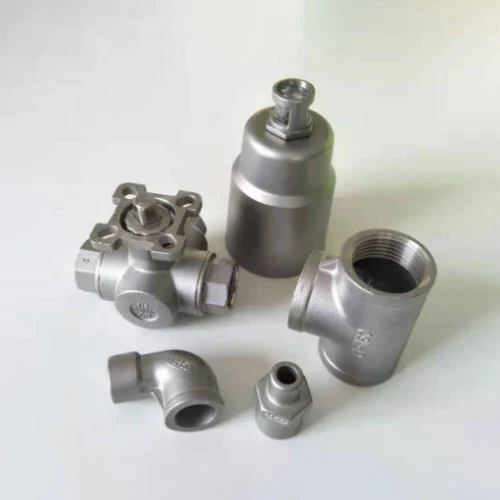Metal Die Casting is a process that uses three major elements, namely machines, molds and alloys, to unify pressure, speed and time. It is a special casting method with little or no cutting that has developed rapidly in modern metal processing technology. It is a process in which molten metal is filled into the mold under high pressure and high speed, and crystallized and solidified under high pressure to form a casting.
The die-casting equipment converts the electrical energy of the motor into the hydraulic energy of the pump through the motor to perform actions (i.e., opening and closing the mold and spraying molten metal into the mold cavity).

The injection part of Metal Die Casting uses the energy of the hydraulic system to push the punch, thereby pushing the molten metal into the mold cavity. Before the molten metal enters the mold cavity, it passes through a flow channel called a runner and a part with a smaller cross-sectional area called a gate. The gate has the function of accelerating the flow of metal, and it also allows the runner system to be easily separated from the casting.
Advantages: It can manufacture metal parts with complex shapes, clear contours, thin walls and deep cavities; high production efficiency; high material utilization rate, and only a small amount of subsequent processing is required to obtain the desired product shape.
Disadvantages: There are often pores and oxide inclusions in die castings; the size of die castings is limited, and the types of alloys are limited.
Die casting alloy is one of the key elements of Metal Die Casting production. When selecting die casting alloys, its performance, process performance, use occasions, production conditions, etc. should be fully considered.
AL-Si alloy: The crystallization temperature interval is small, the silicon phase in the alloy has a large solidification latent heat and a large specific heat capacity, and the linear contraction coefficient is also relatively small.
AL-Mg alloy: Good mechanical properties at room temperature. Strong corrosion resistance, relatively poor casting performance, large fluctuations in mechanical properties and wall thickness effects.
AL-Zn alloy: After natural failure, die castings can obtain higher mechanical properties.
The selection of die casting machines has a very important impact on many aspects of the die casting production process, such as product quality, production efficiency, and management costs. To this end, it is a highly technical and economical task to reasonably select a suitable die-casting machine.
Classification of die-casting machines Hot chamber die-casting machine: zinc alloy, magnesium alloy, etc.; cold chamber die-casting machine: zinc alloy, magnesium alloy, aluminum alloy, copper alloy, etc.; vertical die-casting machine: zinc, aluminum, copper, lead, tin.
The difference between hot chamber and cold chamber is whether the injection system of the die-casting machine is immersed in the metal solution. Die-casting machines can also be divided into horizontal and vertical types.
Copyright © 2024 Xiamen Xiangxing Xin Industry and Trade Co., Ltd. All Rights Reserved. Links Sitemap RSS XML Privacy Policy